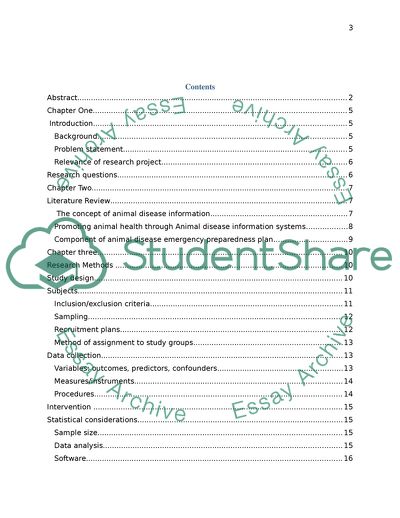Cite this document
(Evaluation of the Emergency Reporting System of Animal Disease in KSA Research Proposal - 1, n.d.)
Evaluation of the Emergency Reporting System of Animal Disease in KSA Research Proposal - 1. Retrieved from https://studentshare.org/agriculture/1875450-evaluation-response-speed-up-of-the-emergency-reporting-system-of-animal-disease-in-ksa
Evaluation of the Emergency Reporting System of Animal Disease in KSA Research Proposal - 1. Retrieved from https://studentshare.org/agriculture/1875450-evaluation-response-speed-up-of-the-emergency-reporting-system-of-animal-disease-in-ksa
(Evaluation of the Emergency Reporting System of Animal Disease in KSA Research Proposal - 1)
Evaluation of the Emergency Reporting System of Animal Disease in KSA Research Proposal - 1. https://studentshare.org/agriculture/1875450-evaluation-response-speed-up-of-the-emergency-reporting-system-of-animal-disease-in-ksa.
Evaluation of the Emergency Reporting System of Animal Disease in KSA Research Proposal - 1. https://studentshare.org/agriculture/1875450-evaluation-response-speed-up-of-the-emergency-reporting-system-of-animal-disease-in-ksa.
“Evaluation of the Emergency Reporting System of Animal Disease in KSA Research Proposal - 1”, n.d. https://studentshare.org/agriculture/1875450-evaluation-response-speed-up-of-the-emergency-reporting-system-of-animal-disease-in-ksa.


